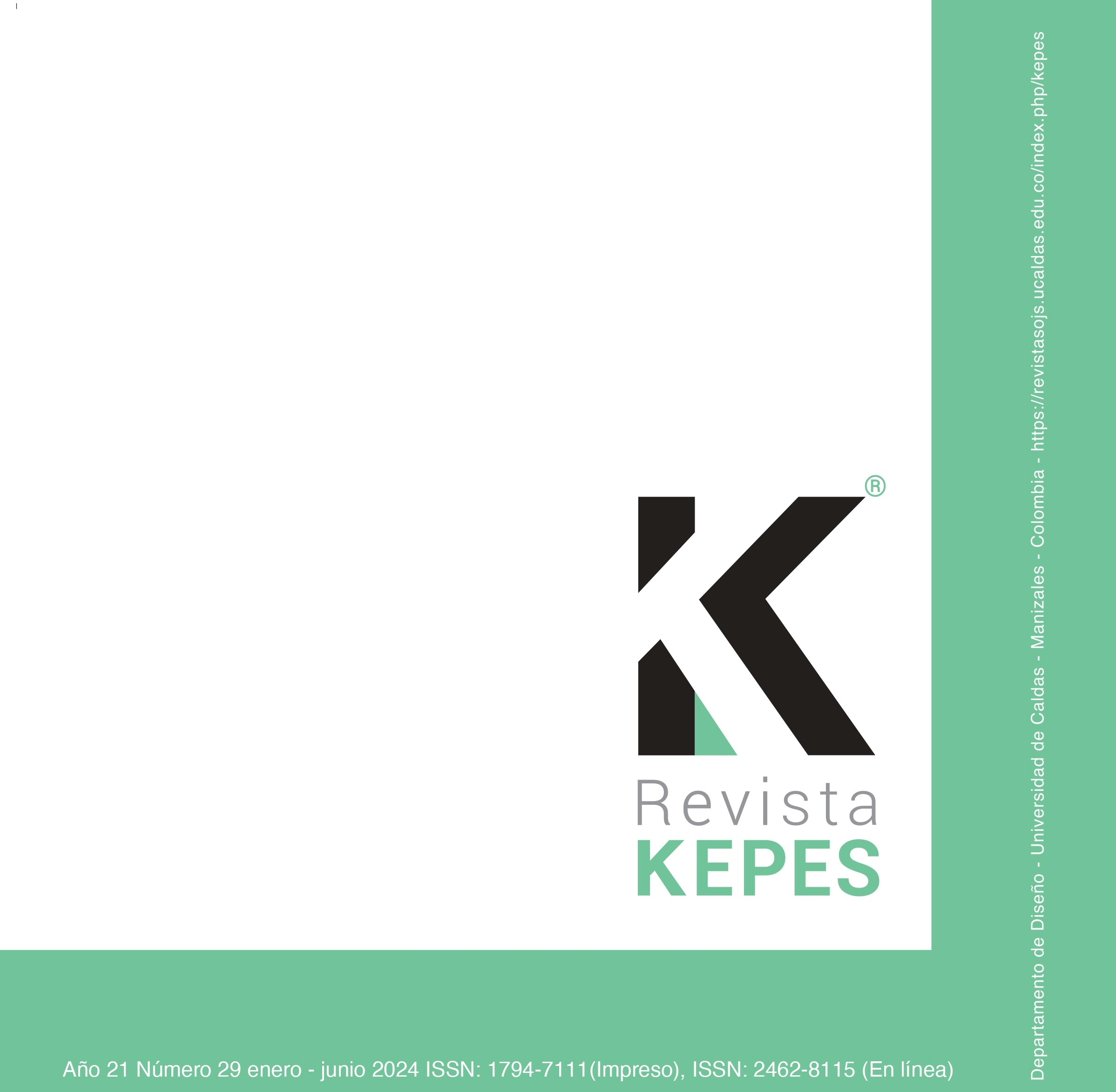Authors
Abstract
The motivation behind this text was based on finding new paths for the history of Latin American design from its colonial past. The research addressed the study of the arts and crafts of the early colonial period and focuses its interest on those who settle in a city like Tunja, a Spanish foundation of great importance for the conquest of the territory of the New Kingdom of Granada in the 16th century and which is currently located in the central area of Colombia. The research question of the study was: What was the influence of the makers or artisans in the configuration of an “encomendera” city like Tunja, to meet the needs of those who lived there during the second half of the 16th century? and it intended to establish the functioning of the arts and crafts in the society of that moment. The problem was approached from a historical research in three methodological moments: i) definition of categories; ii) search for documents in the Archivo Historico Regional de Boyacá (AHRB) from the years 1550 to 1610, which corresponded to the years of flourishing of the city; and iii) historical development with the explanation and understanding of the social processes around the life and activity of artisans. In conclusion, they and their jobs were essential for the conquest, control of territory and the founding of the city. Within the information referenced about their arrival in the Indies, the demand for carpenters, bricklayers, stonemasons, and blacksmiths was noted from the beginning as important support for the construction of housing, tools and other trades and activities typical of the colonial economy, that were also joined by tailors, shoemakers, silversmiths, and farriers who came to satisfy a significant number of needs with interesting objects revealed by the archival documents, the reading of which was considered an approach to the history of design in the colony.
References
Bayley, S. y Conran, T. (2008). Diseño. Inteligencia hecha materia. Blume.
Bonsiepe, G. (2008). Prefacio. En S. Fernández y G. Bonsiepe (Coords.), Historia del diseño en América Latina y el Caribe (pp. 10-16). Editora Blücher.
Broncano, F. (2008). “In media res”: cultura material y artefactos. ArtefaCToS, 1(1), 18-32.
Campi, I. (2020). ¿Qué es el diseño? Editorial Gustavo Gili.
Cortés, V. (1985). Tunja y sus vecinos. Repertorio Boyacense, 317, 1-55.
De Cobarrubias, S. (1611). Tesoro de la lengua castellana, o española. Luis Sánchez, impreso del Rey N S.
Derry, T., Trevor, W. y Navascués, J. (1998). Historia de la tecnología: desde la antigüedad hasta 1750. Siglo Veintiuno.
Devalle, V. y Garone, M. (Eds.). (2020). Diseño latinoamericano: diez miradas a una historia en construcción. Universidad de Bogotá Jorge Tadeo Lozano, Universidad Santo Tomás, Politécnico Grancolombiano.
Escobar, N. (2016). Lujo y suntuosidad en la vestimenta y objetos personales en la Tunja encomendera del periodo de los Austrias, 1550-1650 (tesis de pregrado). Universidad Pedagógica y tecnológica de Colombia.
Fernández, S. y Bonsiepe, G. (Coords.). (2008). Historia del diseño en América Latina y el Caribe. Editora Blücher.
Fontana, J. (2001). La historia de los hombres. Crítica. Fundación Historia del Diseño. (2014). Memoria de actividades e informe económico. FHD.
Grisales, A. (2015). Artesanía, arte y diseño. Universidad de Caldas.
Martín, F. (2002). Contribuciones para una antropología del diseño. Gedisa Editorial.
Martínez, M. del C. (1991). Estudio de los nombres de los oficios artesanales en castellano medieval (tesis doctoral). Universidad de Granada, Granada, España.
Paniagua, J. (2010). Trabajar en las Indias: los trabajos mecánicos 1492-1850. Lobo Sapiens.
Paniagua, J. (2013). La joyería colonial en Nueva Granada. Siglos XVI y XVII: Aspectos generales y documentos pictóricos. Ensayos. Historia y teoría del arte, 24, 46-83. Real Academia Española. (1726). Diccionario de Autoridades de la Real Academia Española 1726-1739. http://web.frl.es/DA.html
Ricard, A. (2000). La aventura creativa. Editorial Ariel S.A.
Salinas, O. (2010). Tecnología y diseño en el México prehispánico. Designio.
Solanas, J. (1981). Diseño, arte y función. Salvat Editores S.A.
Sora, L. (1994). El trabajo artesanal en la historia de Tunja, años 1570-1600 (tesis de pregrado). Universidad Pedagógica y Tecnológica de Colombia.
Torrent, R. y Marín, J. (2005). Historia del Diseño Industrial. Ediciones Cátedra.
Vanegas, C. (2010). Autonomía y subordinación: Tensiones entre autoridades indígenas y coloniales en el obraje de comunidad de Duitama (1596-1611). Pontificia Universidad Javeriana.
Vargas, L. (2017). Pintores en el esplendor de Tunja: Nombres de artífices para salir del anonimato (siglos XVI y XVII). Historia y Memoria, 15, 49-72.
Wiesner, L. E. (2008). Tunja, ciudad y poder en el siglo XVII. Imprenta y Publicaciones, Universidad Pedagógica y Tecnológica de Colombia.

 PDF (Español)
PDF (Español)
 FLIP
FLIP






















